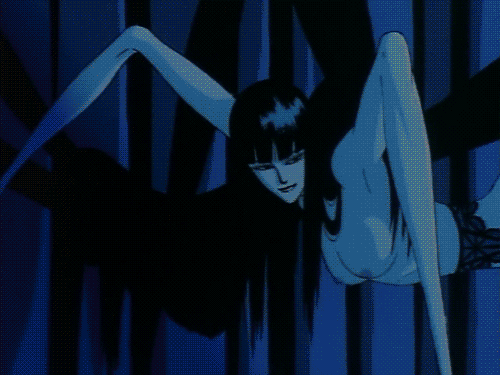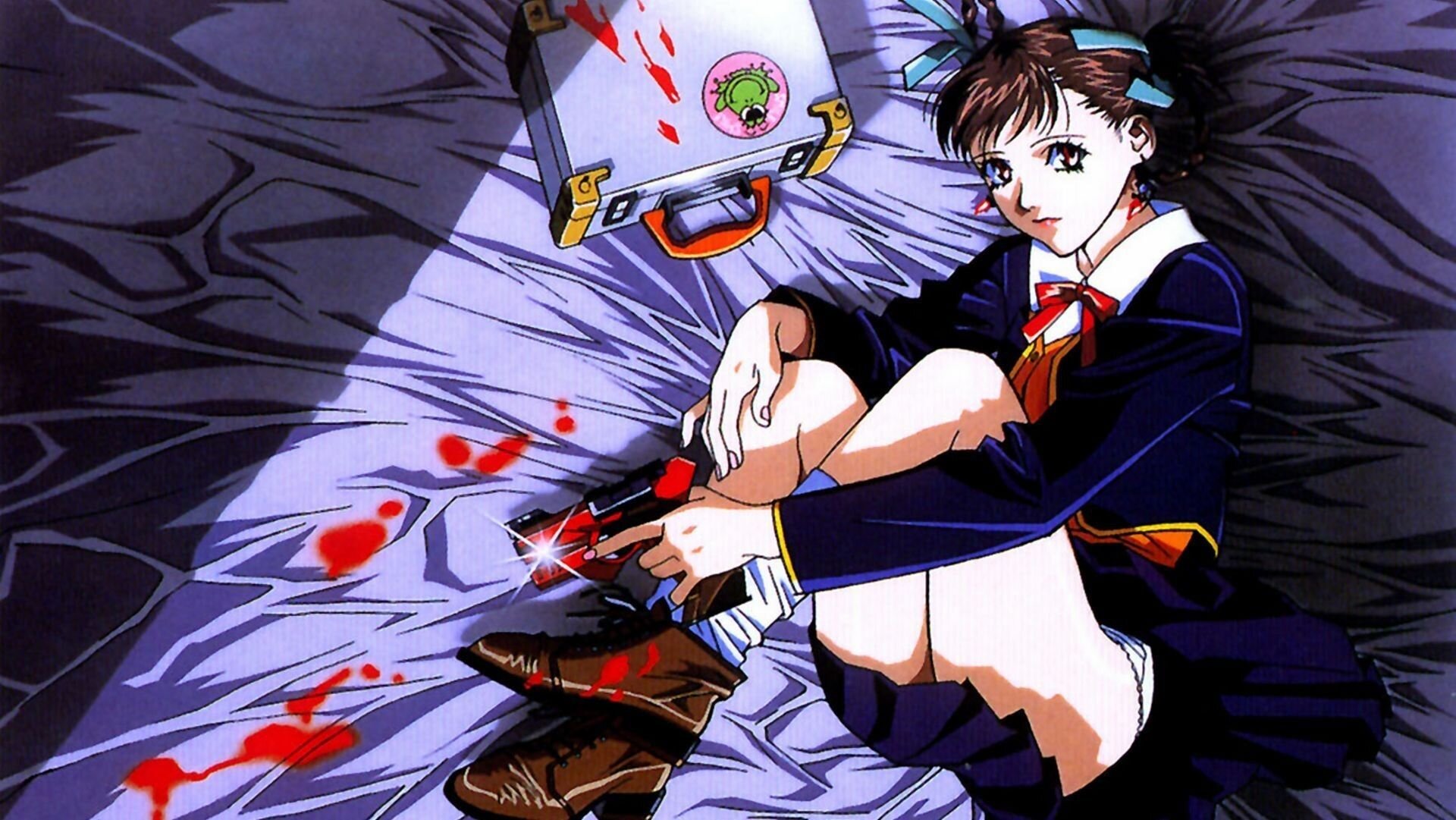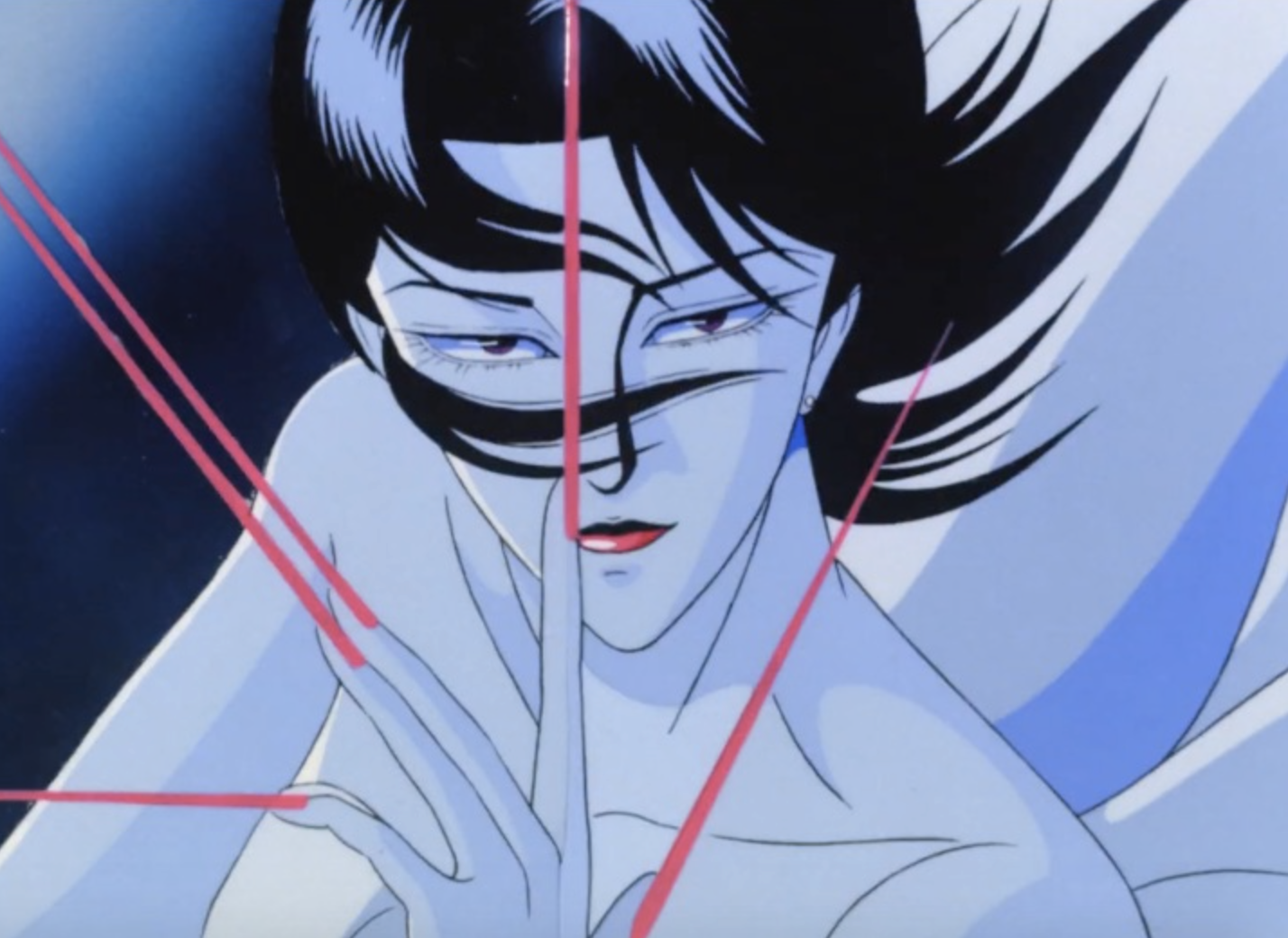10 MUST-WATCH SUBVERSIVE ANIME FILMS
An Introduction to “OVA” (Original Video Animation) and the subversive anime of the 80s and 90s.
* Warning.
This article contains flashes of light that could trigger seizures for people with visual sensitivities.
Wicked City (1987)
In the early 1980s, the Japanese economy was booming; the miraculous post-war economic recovery was in full swing and society was at the mercy of a decadent fever. Japan’s financial giants, flush with cash were on a buying spree, adding glamorous properties to their bulging portfolios. This exuberance was no less felt by the general public, who were living life to the max, drinking expensive cocktails, hailing down taxis with 10,000 yen bills and partying to the early hours of the morning.
However, an often overlooked effect of this economic “bubble era” is the consequent influence it had on the creative minds of the time. This increase in budgets afforded to the anime industry as a whole, resulted in a relaxed state of creativity. Not nearly as burdened with creating commercial or even remotely successful productions, studios were given the freedom to push boundaries and create whatever their hearts desired.
Ninja Scroll (1993)
This quest for innovation and rule breaking led to a golden era in the history of animation within Japan, with classic underground titles being produced that would go on to influence the very notion of what we deem acceptable to be displayed. The lines between what was deemed "adult” and “child” entertainment was being erased, redrawn and demolished over and over again.
OVA (オリジナル・ビデオ・アニメーション) or “original video animation” was born in this disruptive storm of culture. With the advent of VCR technology now becoming a mainstream fixture in Japanese households, the anime industry was growing to a colossal scale and the demand for new cutting-edge releases was feverous.
Kite (1998)
Confronted with such demand, the anime production companies began to release films and short series that would go directly to video stores, skipping the cinema outright. Due to the overflow in quick cash pouring into the country, anime companies were less stingy with their productions, green lighting mass numbers of new OVA’s into the market, without much care of the return on investment. They were willing to spend money just to test the appetite of the rabid anime fans and if something proved to be popular, then they would pour more money in and extend the series.
Wicked City (1987)
It was a simultaneously glorious and depraved time to be alive. Greed and decadence were rife, but for all this indulgence, we have a plethora of subversive and genre-breaking films to be thankful for. Ultra violent, body-horror flicks being released alongside extremely perverted titles, no country can boast such a wide variety of in-your-face cinema like Japan.
To look back and understand this sometimes overlooked niche in anime history, the GATA team compiled a list of some of the most subversive and hard-hitting titles from that time period. We guarantee some of these films will shake you to your core.
WICKED CITY (1987)
Yoshiaki Kawajiri
Wicked City (1987)
To begin, we introduce a film from director Yoshiaki Kawajiri (who will feature prominently in this list), with his directorial debut, the sinister and deliciously depraved Wicked City. Released in 1987, Wicked City is a film drenched in perverted sex, ultra violence and mutated demons. Described by Los Angeles Times critic Charles Solomon as a “sadistic, misogynistic erotica”, Wicked City doesn’t pull its punches, going full-throttle; pushing its subject matter down the throats of the audience with glee, making us wonder if a film like this could possibly be made today.
Taking place in the end of the 20th century, it tells the story of a human world that secretly exists alongside a demon world, a boundary that is enforced by a secret police force known as the “Black Guard”. Known for its cinematic qualities, featuring kinetic pacing and skilful cuts and camera angles, Wicked City is a hidden gem in the annals of anime history.
Wicked City (1987)
Kite (1998)
Yasuomi Umetsu
Kite (1998)
Highly controversial for its subject matter, including extreme violence and rape, the film was banned in certain countries and is still guaranteed to shock people to this day. True exploitative cinema at its core, it is designed to cause controversy, with no morals at its core. Directed by Yasuomi Umetsu, Kite follows a teenage assassin and her journey to escape a stockholm syndrome induced scenario of deceit and betrayal. Featuring a bloody, bathroom- shootout, interweaved with a hypnotic and wild jazz score, Kite has been influential in the cinema making of such Hollywood directors as Quentin Tarantino. During the production of Kill Bill, Tarantino used it as a reference point for the story and recommended its viewing to actress Chiaki Kuriyama, while preparing for the role of Gogo Yubari.
Kite (1998)
SERIAL EXPERIMENTS LAIN (1998)
Ryutaro Nakamura
Serial Experiments Lain (1998)
A post-modern, avant—garde treatise on the insidious nature of the digital age we live in, Serial Experiments Lain is a 13 episode long television series directed by Ryutaro Nakamura. Touching on philosophical topics such as the nature of communication and reality, Serial Experiments Lain is a treasure trove for the budding pseudo-intellectual.
Often praised for its atmospherics and dark depiction of isolation, in a world devoid of absolute meaning and truth; Lain is a truly unique piece of anime and television history. With themes of mental illness, personality disassociation and virtual avatars, this anime asks deep and meaningful questions about the direction of contemporary society.
Serial Experiments Lain (1998)
Ninja Scroll (1993)
Yoshiaki Kawajiri
Ninja Scroll (1993)
Another product of the twisted mind of Yoshiaki Kawajiri, Ninja Scroll is the Edo period-set tale of a mercenary who battles a team of ninjas with supernatural powers. Featuring slick visuals and stylish action sequences, Ninja Scroll has been cited as a huge influence on the visual style of the classic cyberpunk film The Matrix. It was so influential in its style that directors the Wachowskis asked Kawajiri to be a contributor for their later anthology series, The Animatrix. Still as slick and as effortlessly cool to this day, Ninja Scroll broadened the western conception of what was possible for an animation and without it, such shows as Afro Samurai wouldn’t have gained such popularity.
Ninja Scroll (1993)
“You don’t trust women from the demon world?”
Perfect Blue (1997)
Satoshi Kon
Perfect Blue (1997)
Initially conceived as a direct to video release, Perfect Blue is film maker Satoshi Kon’s directorial debut. A psychological horror that focuses on the societal pressures faced by women in Japan and the manufactured nature of pop idols. The film follows Mima Kirigoe, a Japanese pop idol as she begins a new stage in her life as a full-time actress. However due to controlling managers and the repulsive opinions of obsessive fans, her career and sanity begins to take a nose dive into chaos.
This lack of autonomy and freedom ravages the mind of Mima, resulting in a gradual decay into insanity and illusion. Doppelgängers, stalkers and misconceptions of self-identity, this film is laden with impressive ideas and concepts that like all good art, force us to take a long hard look at our role within society and the implications that our actions can have on those around us.
Perfect Blue (1997)
Ghost in the Shell (1995)
Mamoru Oshii
Ghost in the Shell (1995)
Possibly the reason why many people became interested in anime, the cyberpunk deep musings of Ghost in the Shell are just as relevant today as they were in 1995. Like all good science fiction, the strength of Ghost in the Shell lies in that it speaks not about the future but rather the issues that are troubling us today. In regards to this film the central tenet is the nature and power of computers.
In a post-digital world how do we coexist with artificial intelligence and what constitutes as authentic life/sentience? These are deep, powerful questions that we are barely scratching the surface of. Luckily for us we have geniuses like Mamoru Oshii and original manga writer Masamune Shirow to delve into these concepts.
Ghost in the Shell (1995)
CRYING FREEMAN (1988-1994)
Daisuke Nishio, Shigeyasu Yamauchi
Crying Freeman (1988-1994)
Based on the manga of the same name by Kazuo Koike, Crying Freeman is the story of the Chinese Mafia hypnotising a Japanese assassin to do their dirty work. Covered in an ornate and complex dragon tattoo Freeman regretfully sheds a tear each night after killing, filled with remorse. Thus he is dubbed the codename “Crying Freeman”.
Developed as an anime OVA by Toei Animation between 1988 and 1994, the series went on to inspire multiple live-action film produced in Hong Kong. Blood, knife fights and explicit nudity, Crying Freeman is a throwback to a time when anime was showing how to be just as “adult orientated” as any other form of entertainment.
Crying Freeman (1988-1994)
DEMON CITY SHINJUKU (1988)
Yoshiaki Kawajiri
Demon City Shinjuku (1988)
Our final entry from Kawajiri, Demon City Shinjuku is an OVA fantasy/horror film that has arguably some of the worst voice acting (English dub) in anime. However, this horrendous voice acting can’t hide the early signs of genius from Kawajiri and his sense of visual flair and extravagance. It tells the story of a young swordsman as he travels to a desolate Shinjuku in order to prevent an otherworldly demon invasion.
Produced by Madhouse Inc, the animation studio behind other classics like Wicked City and Vampire Hunter D: Bloodlust, Demon City Shinjuku is a worthy addition to this collection of integral features.
Demon City Shinjuku (1988)
GENOCYBER (1994)
Koichi Ohata
Genocyber (1994)
Based on the 1992 cyberpunk manga series from Tony Takezaki, Genocyber is a five-part OVA from 1994. Depicting some of the most extreme violence in anime history, Genocyber focuses on a futuristic story whereby the boundaries between nations has gone and now are slowly merging together, however the private armies of major nations begins to bring peace to a halt. Sadistic in nature, the over the top gore sometimes overshadows the convoluted plot at times.
Genocyber (1994)
Urotsukidōji: Legend of the Overfiend (1987-1989)
Hideki Takayama
Urotsukidōji: Legend of the Overfiend (1987-1989)
Probably the most perverted film on our list. Legend of the Overfiend is a “hentai” connoisseurs dream. Tentacle porn and nightmarish demons, this is the film which has been credited with popularising the trope of violence and sadomasochism in manga and anime. Directed by Hideki Takayama as an OVA series, it has faced equal amounts of critics and fans. The merits of such a film series are up to debate to this day, but it can’t be denied that its creator’s aim of shocking the audience was definitely met.
Urotsukidōji: Legend of the Overfiend (1987-1989)
























